Why Modern Web Design Is No More: The New Era of 'Product Design'

I'll admit it, I grew up alongside the Internet revolution, but can still recall life without the constant connectivity of Web and mobile phones and apps. More importantly, I can remember Web design when digital was still a nascent, largely experimental medium for most brands and marketers.
My, how times have changed. The obvious transformations, like the interconnectedness of the Web, have become the center point of brand building, growing into a massive driver of global commerce and a keystone of human communication. Designing for the Web has also undergone rapid, fundamental changes in recent years, so much so that it is nearly unrecognizable.
The reality is that the Web isn't "the Web" in the traditional sense anymore. Ecommerce, CMS software, CRM, AI, publishing, social media, digital products and services, SaaS - none of these are static in the way that Web design once was. By and large, the Web is now a gigantic global software platform. And by extension, modern Web design is no longer Web design; it's product design.

We've seen this reflected in a number of ways, but some of the most pronounced amendments in how we approach design fall into three main categories: process, tools and responsibilities.
First, process. While there's no magic bullet here, it is safe to say that designers have had to radically readjust their ways of working from the heady days of "lock yourself in a room until the magic idea strikes" to something that, when examined closely, strikingly resembles the scientific method. From Agile to Waterfall to a hybrid of the two that we like to call "Wagile," to incorporating sprints, scrums and rapid prototyping into the designer's workflow, there is a new rigor and analytical mindset infused into the design process that simply was not present a few years ago.
Remember when everyone just designed "templates?" - so quaint! Conversations around design patterns and components were nonexistent just a few short years ago. Now, modern Web design is driven by these fundamental concepts - repeatable design components with specific functionality and behaviors, created to be scaled and re-used across multiple applications. "Design Systems" (which seems to be the design term du jour) is essentially a software product design paradigm applied to UX, UI and brand experience.
Next, tools. To say there has been a proliferation of design tools over the past few years would be the understatement of the decade. There are tons of variations of UX and UI design tools, prototyping and visualization tools, and hybrid design/code tools, bringing new ones to market each week. In some ways, it is overwhelming and risks fragmenting what used to be the most standard part of the design process. The most widely used of this new class of design tools - including Sketch, InVision and Zeplin - have opened up an entirely new world of possibilities for designers, allowing them to bring their visions to life faster, test them earlier and more often using real customers as their subjects.
Finally, responsibilities. Of all the major changes underway, this one may be the most radical and most disruptive, but also the most positive. We've reached a point where UX, UI and technology are now able to be expressed in such an integrated way that there has been a total breakdown of the barriers between them. Why? Because in many cases there are not clear divisions between these three things and the customer on the other end who doesn't care about them.
At cutting edge agencies, we are seeing design teams structured in a more integrated and iterative model. We now have designers that used to simply work in Photoshop or Illustrator creating not just experiences and visuals, but behaviors as well. Everything from responsive break points, data manipulation and structure, UI animation and micro-interactions needs to be designed, prototyped and communicated to clients and developers. Yes, it adds complexity and nobody has perfected it yet, but sharing responsibilities and actively collaborating across what used to be hard lines has added incredible strategic value to the notion of "design" and has raised the bar on what great digital experiences can and should be.
As the Web continues to evolve from a static collection of HTML pages to a dynamic platform for software development, the fundamental underpinnings of design for digital have and will continue to change and align themselves much more closely to the principles of software and product design. Sure, it is exciting but we should also look at this point in time as an amazing opportunity to experiment, explore and test new models and ideas of the kinds of teams, talents and tools we would like to see in the next step of evolution for the Web. After all, digital is how humanity communicates.
About the Author
Michael Janiak brings passion, energy, vision and 14 years of experience to his role as VP, Creative at Fluid. He possesses a unique ability to fuse creativity, technology and strategy into thoughtful, engaging digital experiences that delight consumers across today's spectrum of devices and platforms. His talent and overall outlook have earned him widespread respect among clients and industry peers alike.
Michael has lead teams on high-visibility engagements for top global brands including Airbnb, LG Electronics, Volkswagen of America, Samsung, Puma, Nixon, Google,, Target, Oakley, The North Face, T-Mobile, Qualcomm and Fender Guitars. His work has earned awards and recognition from The Webby's, The FWA's, Awwwards, HOW Magazine Interactive, The Addy's, The IMA Awards, The Davey Awards, The Adobe Design Awards, Forrester, Behance, The Andy's and more.





